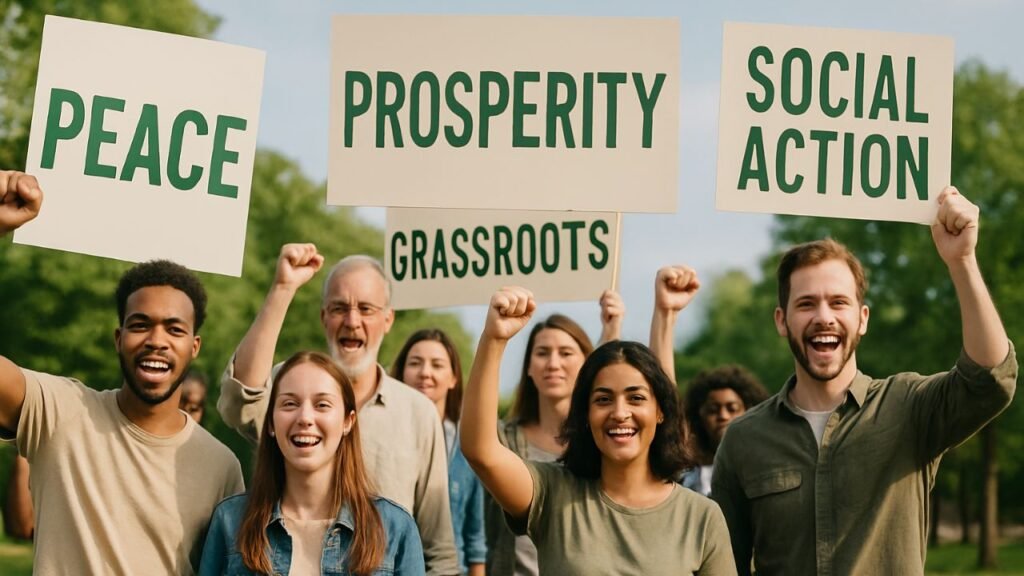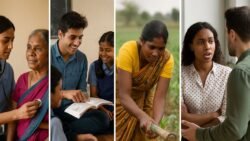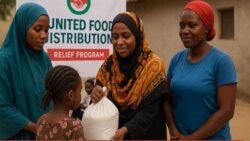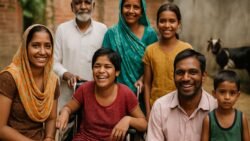Movement for Peace – Join a movement that blends purpose, progress, and people power. At a time when global challenges—from poverty to polarization—continue to fracture communities, grassroots social action stands out as a vital tool for restoring both peace and prosperity. Whether it’s empowering women through rural skill-building, or offering food security to underserved families, local initiatives create tangible impact that big institutions often fail to reach. Organizations such as the United Foundation for Development & Peace (UFDP) have proven how community-led models can uplift entire regions with minimal resources. The beauty of grassroots movements lies in their inclusiveness: anyone can participate, lead, or benefit. They bring people together across religious, cultural, and political lines, restoring humanity’s collective strength. When local hands and hearts unite, they not only heal their own communities but also lay the foundation for a more just, peaceful world. Now is the time to rise beyond passivity and actively join campaigns that value action over apathy. Because peace doesn’t wait—and progress starts at the grassroots.

Why Grassroots Social Action Is Essential for Peacebuilding and Community Development
Grassroots social action isn’t just charity—it’s systemic empowerment. By giving people direct control over their community’s challenges and solutions, these movements allow for sustainable peacebuilding and bottom-up development. For example, South Africa’s Black Sash advocacy program shows how civic engagement can influence national policy and strengthen local justice. From climate resilience to education, these initiatives tackle root problems rather than symptoms. In post-conflict regions, grassroots models also help rebuild trust and civic life. They work without dependency on massive foreign aid, making them resilient and self-sustaining. More importantly, grassroots efforts foster inclusivity: women, youth, elders—all voices matter. These micro-level interventions align with global goals like the UN Sustainable Development Goals (SDGs), creating both local and international ripple effects. In contrast to top-down programs, people-led campaigns can adapt quickly to on-the-ground needs. In this sense, every community meeting, food drive, or training session becomes an act of peace. The key to long-term development is not outside experts—it’s empowering insiders.
How You Can Participate in a Movement for Peace and Prosperity
You don’t need to be a politician or philanthropist to ignite change. Your voice, time, and skills are enough to make a difference. Joining a grassroots movement can be as simple as volunteering in local programs, amplifying advocacy campaigns online, or starting community-based projects. For instance, youth-led organizations like Activate! Change Drivers in South Africa provide platforms for young people to design and lead social initiatives. These groups need designers, writers, project managers, fundraisers, and passionate citizens. You can also collaborate with NGOs like Afrika Tikkun that provide vocational training and community health support. By aligning your efforts with proven frameworks, your impact becomes more focused and measurable. Supporting grassroots causes also offers personal growth—you gain purpose, skills, and a supportive network. Most importantly, your involvement inspires others to act. Movements grow through momentum, and your step could be the catalyst for dozens more. In a world of digital noise, real-world action stands out.
The Role of UFDP in Strengthening Grassroots Change Across Communities
Organizations like the United Foundation for Development & Peace (UFDP) are making significant strides in reshaping how communities confront poverty, inequality, and violence. Operating through localized partnerships, UFDP facilitates programs in education, healthcare, disaster relief, food distribution, and gender equality. What sets UFDP apart is its collaborative ethos—it doesn’t impose solutions but co-creates them with community members. From organizing peace dialogues in conflict-prone areas to initiating microenterprise training for unemployed youth, the foundation’s initiatives are built for longevity and scale. UFDP also works with schools, local leaders, and social workers to create safe and inclusive environments for children and women. By focusing on vulnerable groups, they multiply the long-term impact of every intervention. Their mission isn’t just about aid—it’s about restoring dignity and resilience where it has been lost. In a world grappling with rapid change, UFDP proves that peace and prosperity are achievable when communities are placed at the heart of the solution.
Take Action Today—Be the Change at the Grassroots Level
Movements don’t begin in government halls—they begin in your street, your school, your WhatsApp group. Becoming part of a peace-and-prosperity mission requires only one thing: willingness. You can start by donating to vetted initiatives, attending awareness workshops, or simply initiating conversations within your network. Grassroots change isn’t about scale—it’s about sincerity and consistency. For those looking to lead, consider applying for fellowships or leadership programs offered by civil society platforms like CIVICUS. You could also become a local ambassador for peace through school outreach or community mentoring. And remember—support doesn’t always have to be financial. Offering your skillset—whether it’s teaching, tech, art, or logistics—can radically elevate a campaign’s reach. Platforms like VolunteerMatch list global and local opportunities where you can start contributing today. As grassroots initiatives grow, they feed a bigger dream: a world where peace isn’t just a slogan, but a shared reality. The movement has already started. The only question is—will you join it?








